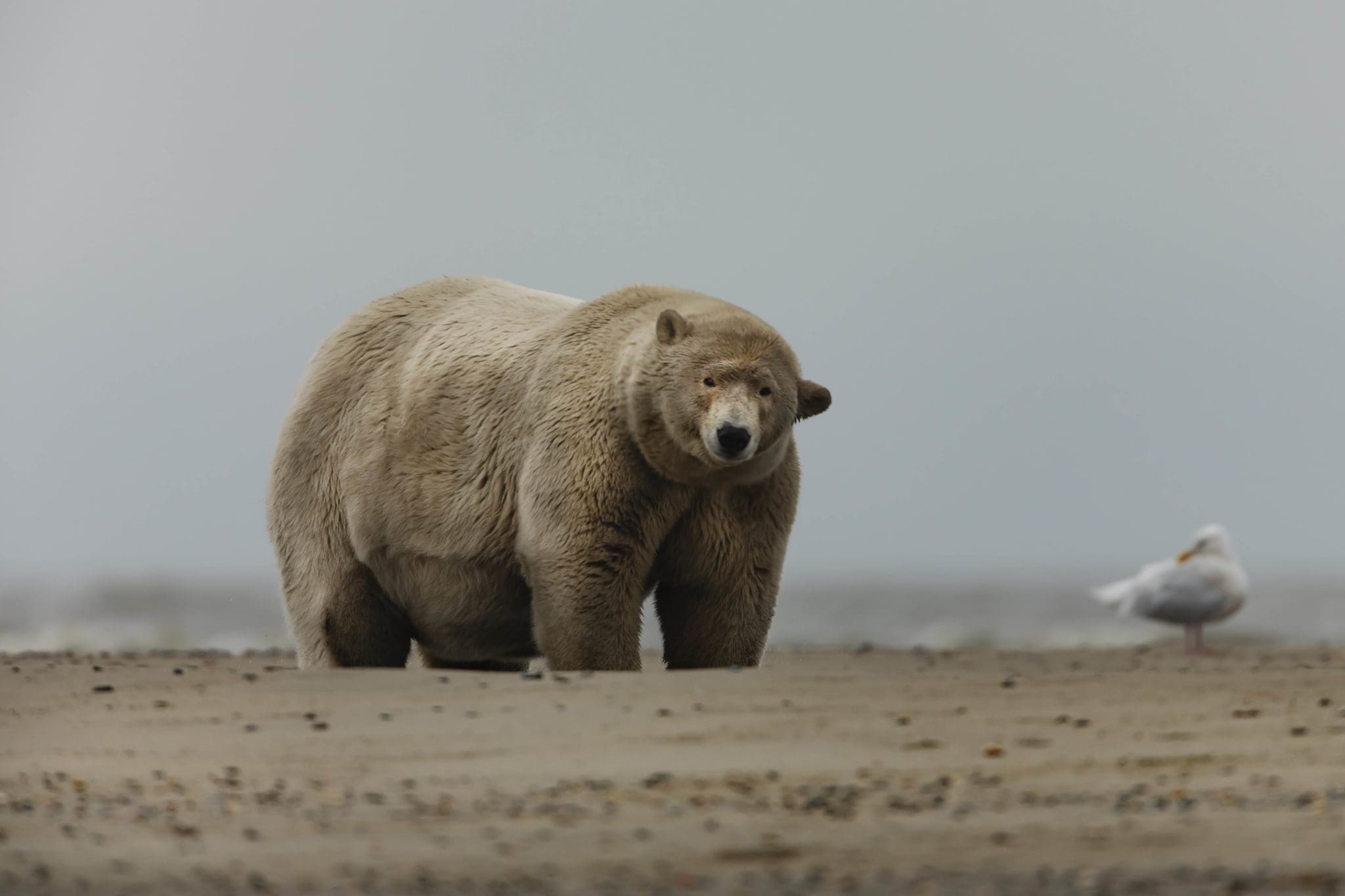Meet Fat Albert: Alaska’s Fattest Polar Bear?
In the remote town of Kaktovik, Alaska, an extraordinary polar bear affectionately nicknamed “Fat Albert” has been turning heads—and breaking scales.
Captured in stunning images by professional photographer Edward Boudreau, Fat Albert has been dubbed one of the largest polar bears alive today.
Weighing an estimated 679 kilograms (1,500 pounds), Albert is a full 200 kilograms (441 pounds) heavier than the average adult male polar bear, which typically weighs around 450 kilograms (1,000 pounds).
His astonishing size has made him a local legend and a fascinating subject for wildlife enthusiasts and scientists alike.

Why Is Fat Albert So Big?
The secret to Fat Albert’s size lies in his access to a unique food source provided by the residents of Kaktovik. The town has a long-standing tradition of sharing leftover whale blubber with polar bears after their whale harvests.
This practice, rooted in respect for the animals and cultural traditions, serves multiple purposes.
Edward Boudreau explains:
“The villagers cut large portions of meat and blubber and haul them about four miles out of town for the bears to find. This keeps the bears from coming to the harvest and disrupting the process—you wouldn’t want twenty or so full-sized polar bears descending on you, hungry and in a hurry. It also pays homage to the bears, showing them respect as the villagers have done for thousands of years.”
This tradition not only ensures the safety of the villagers but also provides the bears with a reliable food source during leaner months when hunting is difficult.
Polar bears like Fat Albert typically rely on the frozen Arctic seas to hunt seals, their primary food source. However, with delayed sea ice formation caused by climate change, polar bears are forced to rely on alternative food sources.
In this context, the whale blubber provided by Kaktovik’s villagers plays a critical role in sustaining the bears until the ice returns.

Read Next:
- Get To Know The Polar Bear – Facts, Myths and Where To See Them
- The 15 Best Places To Visit In Alaska
- The Best Time To View The Northern Lights In Alaska
How Does Fat Albert Compare to Other Polar Bears?
While Fat Albert’s size is remarkable, he’s not the largest polar bear ever recorded. That title belongs to a massive bear weighing 1,001 kilograms (2,209 pounds), documented in 1960.
Still, Fat Albert’s impressive girth has captured the imagination of locals and visitors alike, earning him a special place in polar bear lore.
A Tradition of Coexistence
Kaktovik’s unique relationship with polar bears highlights a rare balance between humans and wildlife. By respecting the bears and sharing resources, the villagers have managed to maintain a coexistence that benefits both species.
As Edward Boudreau notes, it’s a win-win situation:
“If the village fails to harvest a whale, the bears have to wait for the sea to freeze over to hunt seals. By providing blubber, the villagers help the bears survive while ensuring their own safety.”
A Reminder of Nature’s Majesty
The story of Fat Albert is a testament to the resilience of polar bears and the ingenuity of the Alaskan people in adapting to a changing environment. As climate change continues to impact the Arctic, such stories remind us of the importance of preserving both wildlife and traditional practices.
So while Fat Albert may not hold a world record, his story is a powerful reminder of the majestic creatures that call the Arctic home—and the incredible ways humans and wildlife can share the planet.
SOURCE: WORLD MEDIA DRUM
